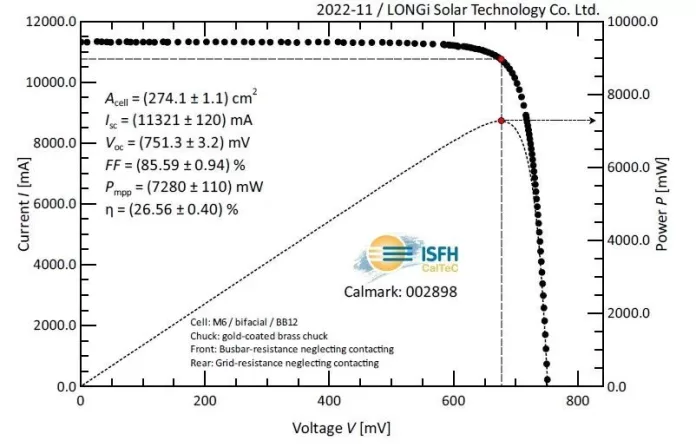Longi has said that it has achieved power conversion efficiencies in mass production of 26.56% for a gallium-doped p-type HJT solar cell and 26.09% for an indium-free HJT cell, both based on M6 full-size monocrystalline silicon wafers. ISFH has said that the results are correct.
“To solve the long-term problem with HJT cells, Longi’s R&D team focused on market demand and technological innovation to achieve the new conversion efficiency for its commercial gallium-doped silicon wafer, which is 0.44% higher than the 26.12% announced in September,” the company said in a statement.
In September, the Chinese company that makes PV modules said that the same solar cell had a power conversion efficiency of 26.12%. In March, the same solar cell had a power conversion efficiency of 25.47.
For the HJT cells without indium, the team used different materials to replace the traditional transparent conductive film made of indium. It says that the different materials cost less and are better for the environment.
“The development also offers a possible solution to the industry’s dependence on indium for large-scale mass production, showing a way for HJT to move toward terawatt-scale production levels,” said Longi.
In November, Longi said that an unnamed HJT solar cell had a record-setting efficiency of 26.81%. The Chinese company also made an n-type heterojunction solar cell that was 26.5% efficient in June and a p-type TOPCon solar cell that was 25.19% efficient in July of 2021. In June 2021, it said that an n-type TOPCon PV cell was 25.21% efficient.





